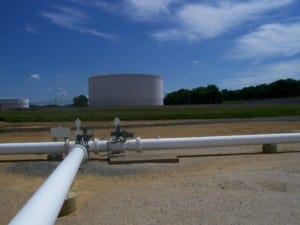EPA’s oil spill prevention program includes the Spill Prevention, Control, and Countermeasure (SPCC) and the Facility Response Plan (FRP) rules. The SPCC rule is enforced to help facilities prevent a discharge of oil into navigable waters or adjoining shorelines. The FRP rule requires certain facilities to submit a response plan and prepare to respond to a worst-case oil discharge or threat of a discharge.
SPCC Plans are required for any bulk oil storage facilities that have an aggregate aboveground storage capacity greater than 1,320 gallons or a completely buried storage capacity greater than 42,000 gallons. Ambipar Response EMS has licensed Professional Engineers and staff that can prepare SPCC plans, design engineering controls, and other Best Management Practices as required under 40 CFR 112.
SPCC Rule
Originally published in 1973 under the authority of §311 of the Clean Water Act, the Oil Pollution Prevention regulation sets forth requirements for:
- the prevention of,
- preparedness for, and
- response to oil discharges at specific non-transportation-related facilities.
The goal of this regulation is to prevent oil from reaching navigable waters and adjoining shorelines, and to contain discharges of oil. The regulation requires these facilities to develop and implement Spill Prevention, Control, and Countermeasure (SPCC) Plans and establishes procedures, methods, and equipment requirements (Subparts A, B, and C).
FRP Rule
The Facility Response Plan (FRP) rule requires certain facilities that store and use oil to prepare and submit an FRP. An FRP demonstrates a facility’s preparedness to respond to a worst case oil discharge.
Facility Response Plans must:
- Be consistent with the National Contingency Plan and applicable Area Contingency Plans
- Identify a qualified individual having full authority to implement removal actions, and require immediate communication between that person and the appropriate Federal authorities and responders
- Identify and ensure availability of resources to remove, to the maximum extent practicable, a worst-case discharge (Appendix E of the Oil Pollution Prevention regulation (40 CFR 112))
- Describe training, testing, unannounced drills, and response actions of persons on the vessel or at the facility
- Be updated periodically
- Be resubmitted to an EPA Regional Office for approval of each significant change.
We have experience with the many requirements of SPPC Plans and FRP plans to help you navigate those regulations.


